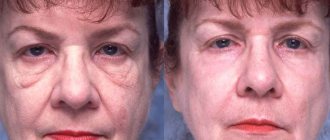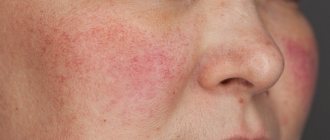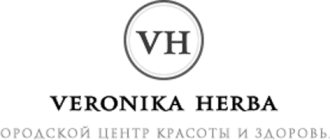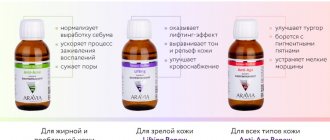Milk peeling is a popular type of superficial chemical peeling that cleanses the skin and gently exfoliates the stratum corneum of the epidermis. Lactic acid is used as the active ingredient. The high effectiveness of this type of peeling is observed at a young age (up to 30-35 years), with sensitive and dehydrated skin.
Basic properties of acid
Lactic acid belongs to the organic group. It is formed during the breakdown of glucose. Since this substance is present in the human body (it participates in the process of carbohydrate metabolism and is one of the components that moisturize the skin), it is completely natural and absolutely safe in terms of allergies. In particular, peeling with lactic acid using Mediderma brand products is in great demand. This composition promotes high-quality cleansing of the skin and allows you to eliminate minor imperfections in its relief.
How does acid affect the skin?
To obtain the effect of acid peeling, different components are used, depending on the patient’s age, the condition of his skin, the depth and volume of defects. Each acid has its own mechanisms of action:
- Almond – gently penetrates into tissues, capable of breaking down fats. Reduces the appearance of defects, fights free radicals, and has antibacterial properties. Used to treat post-acne and acne scars. Mostly suitable for superficial peeling.
- Milk – optimal moisturizing and whitening. Restores skin turgor and elasticity, removes inflammation, reduces the depth of wrinkles.
- Retinoic – promotes collagen synthesis in the body, removes pigmentation. Smoothes out fine wrinkles and improves skin texture.
- Malic acid is a universal acid used to moisturize and saturate cells with oxygen and nutrients. Stimulates microcirculation.
- Glycolic – care for oily skin. Helps with scars, scars, post-acne, eliminates signs of age-related aging. Evens out the texture and tightens pores.
- Ferulic – helps eliminate the effects of ultraviolet exposure. Gently penetrates the dermis, inhibits the inflammatory process, and prevents redness.
- Salicylic acid – dissolves dead epidermal cells, provides deep cleaning of pores. Normalizes the functioning of the sebaceous glands, activates the production of collagen and elastin.
The type of composition for acid peeling, concentration, and exposure time are determined individually by the cosmetologist, depending on the condition of the skin and the age of the patient.
There are three main types of peeling:
- superficial – shallow effect on the epidermis (fruit, glycolic, almond, retinoic, milk);
- median – affects the dermis (salicylic acid, trichloroacetic acid, azelaic acid);
- deep - affects all layers of the skin, down to connective tissue and fiber (phenolic).
Penetrating into the epidermis, the acid burns damaged, old and keratinized tissue, while simultaneously stimulating high activity of regeneration, cell division and the appearance of new structures. Also, chemical exfoliation of the stratum corneum promotes the accelerated production of your own collagen and elastin.
Important! A deep type of cleansing effect is carried out exclusively in special clinic conditions by a cosmetologist. The use of anesthesia and monitoring of the patient's health condition is required.
Operating principle
The procedure has a gentle and non-traumatic effect on the skin. It is recommended for hypersensitivity, a tendency to dryness or, conversely, to oiliness. Cosmetologists note that professional peeling with lactanic acid is beneficial for any skin type, therefore it is universal.
As a result of the procedure, the following is observed:
- active renewal of epidermal cells;
- improvement of local microcirculation;
- acceleration of the synthesis of collagen fibers and lycosaminoglycans;
- strengthening the natural lipid barrier of the skin;
- deep hydration.
Even with high sensitivity of the skin, a slight exfoliating effect appears without severe redness and other undesirable consequences after the session. Milk and almond-milk peeling, in addition to ideally cleansing pores, provides intense hydration and restoration of the correct water balance. A beautiful natural color returns to the face, and there is no need to worry about noticeable lightening of dark and tanned skin.
Lactic acid combines well with various auxiliary components. In particular, milk-glycol peeling is used to affect the middle layers of the dermis, and milk-salicylic peeling is used to relieve inflammation and fight rashes.
How is peeling useful for rosacea?
There is no need to be afraid of peeling for couperose skin. When used correctly, it will be useful and relieve symptoms.
After exposure to peeling, you can notice changes:
Be sure to consult a cosmetologist. Find out your stage of rosacea and care features. Make a treatment plan, select care products.
An online cosmetologist works on the website of the online store of ANNA LOTAN products. It will help you navigate the brand’s products. Will tell you about the features of using the product.
Indications and contraindications
It is worth signing up for the procedure if you have problems such as:
- minor age-related changes (superficial wrinkles, thinning of the skin, decreased elasticity);
- sagging, excessive dryness or increased oiliness of the skin;
- intense peeling, non-infectious inflammation;
- hyperkeratosis (increased thickness of the stratum corneum);
- excessive secretion of the sebaceous glands;
- “black spots”, acne, acne;
- unhealthy, “tired” complexion;
- uneven skin texture.
Main contraindications:
- individual intolerance to the components of the drug;
- taking retinoids, some antibiotics and other medications that increase the photosensitivity of the skin;
- fresh tan after solarium or beach;
- acute inflammatory processes;
- skin injuries (scratches, burns, etc.);
- recent hair removal;
- colds;
- diabetes;
- cancer;
- herpes.
Cuperosis
Diabetes
Menopause
Climax
Hepatitis
Pancreatitis
14207 March 26
IMPORTANT!
The information in this section cannot be used for self-diagnosis and self-treatment.
In case of pain or other exacerbation of the disease, diagnostic tests should be prescribed only by the attending physician. To make a diagnosis and properly prescribe treatment, you should contact your doctor. Cuperosis: causes of appearance, what diseases it occurs with, diagnosis and treatment methods.
Definition
Cuperosis (dilated capillaries, spider veins, couperose-prone skin, couperosa) is a persistent expansion of small capillaries with thickening and a pronounced decrease in the elastic properties of their walls, as well as blood stagnation. The so-called spider veins are usually localized on the nose, cheeks and cheekbones.
Women encounter this pathology more often than men; rosacea is especially common in women with thin and pale skin.
Types of rosacea
Cuperosis can be congenital or acquired.
There are 4 stages of rosacea:
Stage 1 - it is characterized by increased sensitivity of the skin; under certain conditions (for example, in a hot room with dry air), temporary erythema and irritation may appear on the face, and against this background a small number of dilated capillaries are visualized.
Stage 2 - the erythema becomes persistent, the gradually expanding capillaries unite into a mesh, and the vessels become brightly colored.
Stage 3 - congestive erythema appears with a distinct vascular network; the skin acquires a pale grayish tint, and inflammatory elements are observed.
Stage 4 - vessels along the entire surface of the face are involved in the pathological process, the skin thickens, becoming rough.
Possible causes of rosacea
The etiological factors for the appearance of rosacea can be divided into endogenous and exogenous.
Towards endogenous factors
refers to hereditary predisposition. A decrease in the elasticity of the vascular wall is a genetically determined condition, which is aggravated by external influences - for example, heat or cold. Congenital rosacea may indicate the presence of hormonal imbalance, somatic diseases, weakness of the valve apparatus of the veins of the lower extremities, etc.
Exogenous factors
leading to the development of rosacea are diseases of the cardiovascular system, liver disease, disorders of the endocrine system, such as thyroid disease. Pathological production of sex hormones during menopause or pregnancy can cause the development of rosacea. In some cases, hormonal contraceptives lead to fragility of blood vessels. Impaired microcirculation of small vessels, including subcutaneous ones, is one of the manifestations of diabetes mellitus.
Autoimmune diseases and some gastrointestinal diseases increase the risk of rosacea.
Skin prone to rosacea is negatively affected by both sudden temperature changes and too cold or hot weather. Staying in direct sunlight, like visiting a solarium, can have a detrimental effect on the condition of the vascular bed.
It's no secret that alcohol and smoking abuse are dangerous to health. However, in people with weak blood vessels, these bad habits can cause significant deterioration of the skin.
You should be careful about your diet - coffee, spicy, fatty foods and carbonated drinks significantly complicate the course of rosacea.
There is evidence that disruption of the skin microbiota provokes dysfunction of the epidermal barrier, which results in increased skin sensitivity to external factors and the development of rosacea.
Which doctors should I contact for rosacea?
If so-called spider veins appear, you should consult a dermatologist. However, given that this condition can be caused by various causes and diseases, sometimes consultation is required.
Diagnostics and examinations for rosacea
To prescribe the correct treatment, the doctor must carefully interview the patient, find out the presence of bad habits, chronic diseases and hereditary predisposition, and clarify the diet and nature of the diet.
To make a diagnosis if concomitant pathologies are suspected, the doctor may prescribe the following examinations:
- biochemical blood test (if liver disease and pancreatitis are suspected);
Stages of the procedure
Milk peeling for the face is usually done in the autumn-winter period. With active exposure to the sun, pigment spots may appear on treated skin. If the procedure is carried out in the summer, it is mandatory to use a cream with high SPF protection for 10 days. Sessions for arms and legs have virtually no restrictions.
The stages are as follows:
- preparation (makeup removal, cleansing);
- test for the absence of an allergic reaction;
- applying the drug with lactic acid;
- removal of the product with a neutralizing solution after 2-10 minutes;
Why do you need peeling?
Peeling is the procedure for removing the top layer of skin. It starts a faster regeneration process. The fact is that with age, the rate of natural skin renewal decreases. More and more dead cells remain on its surface. This leads to dull complexion, the appearance of wrinkles, inflammation and other imperfections. With regular exfoliation, all of these problems can be eliminated or prevented from occurring. Peels are:
- Physical (use abrasive particles, for example, scrubs);
- Chemical (use chemicals, such as acids);
- Hardware (use laser systems or ultrasound).
Course Features
To get a pronounced effect, it is recommended to do 3-10 repetitions with an interval of 1-2 weeks. Milk peeling goes well with procedures for nourishing the skin with serums, fluids, creams, masks, as it improves the penetration of beneficial components into the dermis. The affordable price of the service allows you to combine it with other care techniques. Peeling with lactanic acid is suitable for cases where aggressive cleansing is not recommended.
You can do a full course of procedures in St. Petersburg. The optimal number of sessions will be determined by our experienced cosmetologist.
Why do you need carbon peeling?
In the West, carbon peeling is called “China Doll Peel”. It got its name due to the effect of smooth “doll” skin that is achieved after the procedure. Carbon peeling combines two types of exfoliation:
- hardware (carried out using a laser);
- chemical (carried out using a special nanogel).
Before the procedure, a special carbon nanogel is applied to the client’s skin, which increases the effectiveness of the laser on problem areas of the skin. Immediately after application, the gel hardens, gluing together dead skin particles, absorbing excess sebum and dirt from the pores. Then, under the influence of a laser, the nanoparticles are heated, and the gel itself breaks down into carbon dioxide and water. Substances removed from the skin are absorbed by carbon, which safely removes them from the tissues. Further, due to the heat of the laser, blood circulation and cell nutrition are improved, and the production of collagen by the skin is stimulated. Carbon peeling is a minimally invasive procedure. It leaves no marks or abrasions, which can happen with other types of laser peels. It is combined with almost all cosmetic procedures: Botox injections, thread lifting, mesotherapy and biorevitalization.
Advantages and disadvantages of carbon peeling
Advantages:
- no rehabilitation period (the result is visible immediately, no need to wait a long time for the skin to recover after the procedure);
- no age restrictions (the procedure can be performed on both teenagers and elderly people);
- compatibility with almost any other cosmetic procedures;
- visible effect after the first procedure;
- painlessness;
- safety.
Flaws:
- For optimal results, it is recommended to carry out a course of procedures;
- high price;
- the procedure is not effective in combating severe age-related changes, deep scars and cicatrices.
At what age can you do laser hair removal?
Results after carbon peeling
The procedure can cope with a range of problems: enlarged pores, acne and small wrinkles. Results can be seen after the first procedure. However, to achieve a more pronounced effect, 3–7 procedures should be performed. Carbon peeling is a minimally invasive procedure. It only affects the top layers of the skin. This allows him to deal with imperfections quite effectively. However, you should not expect too strong an effect from it, which will remain for years. The safety of the results of the procedure depends on the client’s lifestyle and anatomical features.
How is the carbon peeling procedure performed?
The procedure can be divided into five stages:
- preparing the skin for the procedure (cleansing and disinfection);
- placing special protective glasses in front of the client’s eyes;
- application of carbon nanogel;
- laser skin treatment;
- removing the gel after the procedure with warm water;
- applying a restorative soothing mask.
The entire procedure takes about 30 minutes. There is no pain during peeling. The client only feels warmth from the device.
How it works
Essentially, this type of peeling is a combination: a dioxide mixture that exfoliates dead epidermal cells, combined with laser heating. Contaminants located in the pores are drawn out by the nanogel. The most delicate and safest laser in comparison with other types of laser is used - neodymium. Its task is to remove dead skin cells while stimulating the production of new ones. Often, the result is noticeable after three to five sessions. If the dermis is too advanced, a course of seven procedures may be required. At the same time, expect that ten or more days should pass before each subsequent one (more precisely, your cosmetologist will tell you). The skin must have time to recover before a new visit.
In combination with mesotherapy, peeling brings noticeable results. But remember that other influences are excluded during this period. Moreover, you should not use it as a preparation for laser polishing.










